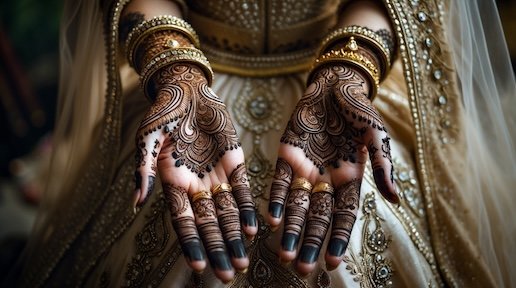Table of Contents
Introduction
Bridal Mehndi Designs are a tradition that beautifully capture the vibrant spirit of Indian weddings. From the moment a bride begins planning her wedding, her lehenga, her jewelry, and her Mehndi pattern, she takes part in a tradition that is centuries old and constantaly evolving. Though Mehndi (or henna) can be applied for any festive occasion like Diwali, Karva Chauth, or Eid, Bridal Mehndi Designs hold a special place in our hearts because it’s intimately tied to the joy, nervous excitement, and emotion that weddings bring.
Unlike everyday or “casual” Mehndi, bridal mehndi designs are typically more elaborate and meaningful. The motifs often include symbols of love, prosperity, and cultural identity, ranging from peacock feathers (a sign of beauty) to lotus blooms (symbolizing purity and spiritual awakening). Brides may even incorporate hidden messages, the groom’s initials, or even small portraits that tell their personal love story.
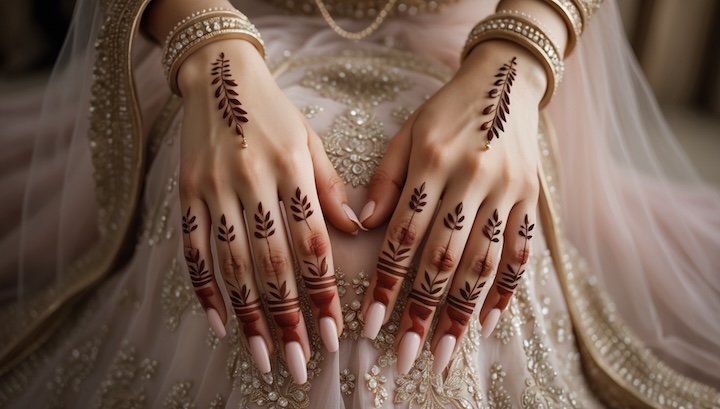
This guide will walk you through everything you need to know about Bridal Mehndi Designs while staying focused on wedding-specific elements. We’ll skip generic application tips and dive straight into the unique aspects that make Bridal Mehndi so enchanting and culturally significant. We’ll explore regional variations across India, wedding-related traditions that revolve around Mehndi, and essential tips for brides who want to get the richest stain in time for their big day.
After reading about Bridal Mehndi Designs in this guide you can explore mehndi designs for other occasions here Mehndi Design Gallery.
Bridal Mehndi in Indian Weddings
In India, a wedding is much more than just a ceremony. It’s a festival of love and unity that spans days, or even weeks, of great celebrations. Among the many events that take place, the Mehndi function (commonly known as Mehndi ki Raat in North India) stands out as one of the most anticipated and loved. It’s a time when the bride, surrounded by her closest friends and family, gets her hands and feet adorned with intricate henna designs.
Why is Bridal Mehndi such a big deal? Because it’s steeped in cultural and emotional significance. For many, the application of Bridal Mehndi symbolizes the bride stepping into a new chapter, one where she will be a part of a new family. Henna is believed to bring prosperity and good fortune, and the color it leaves behind is thought to reflect not just aesthetic beauty but also the bride’s readiness for this big life transition.
Overall, Bridal Mehndi acts as a unifying thread across diverse communities in India and beyond. Each region adds its own twist, whether that’s the use of specific motifs, a certain thickness in the lines, or unique placement on the hands and feet. Yet, the heart of the tradition remains the same, celebrating the bride’s journey with a beautiful art form.
Bridal Mehndi Design Inspiration
When people talk about “Bridal Mehndi Designs”, they often imagine hands and feet completely decked out in elaborate, swirling patterns. This section dives into the many forms these designs can take. Whether you prefer heavily detailed motifs or you’re a millennial bride who loves a minimalist design, there’s something for everyone. Feel free to use these designs as they are or combine parts of multiple designs and create something that’s uniquely yours.
Full Hand Bridal Mehndi Design
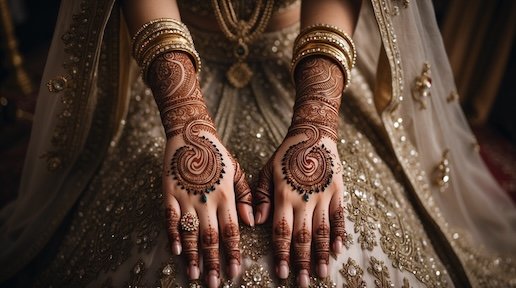
Full Hand Bridal Mehndi Design is very common in North Indian weddings. This type of mehndi covers the entire palm, back of the hand, wrist, and sometimes even extends up the arms. These designs are often dense and detailed, leaving little negative space. Traditional motifs such as peacocks, lotuses, paisleys, and mandalas interweave to create an almost tapestry-like effect.
Full-hand designs can also incorporate tiny personal details like the initials of the bride and groom intertwined within a paisley swirl or a miniature portrait hidden near the wrist. The most remarkable aspect of these elaborate styles is that they become an artistic expression of the bride’s story, displayed front and center for all to admire during the wedding festivities.
Here are just a few Bridal Mehndi Designs from our catalog:
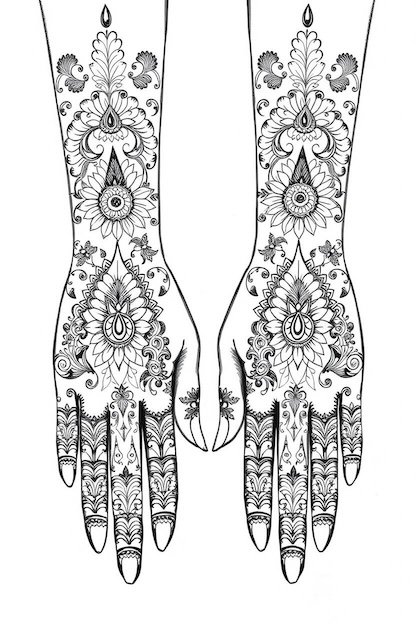

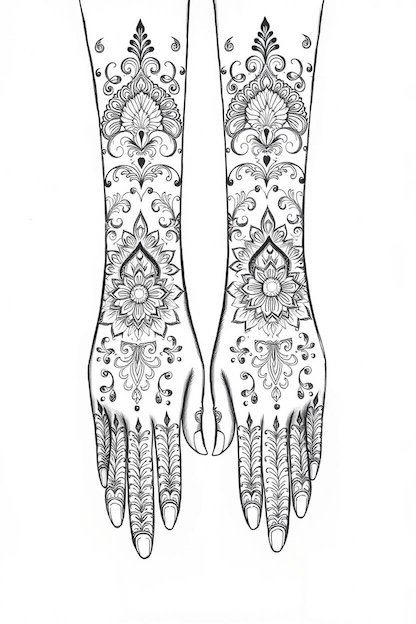

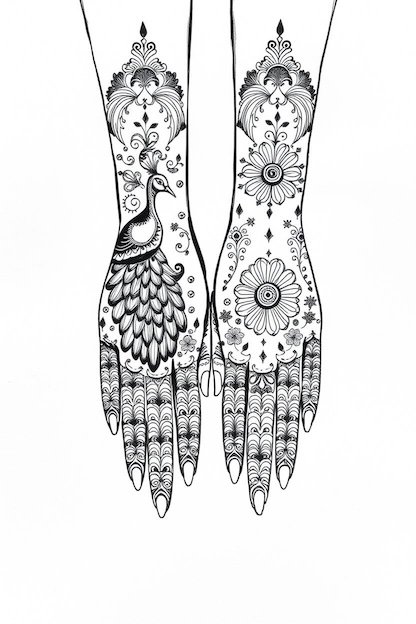
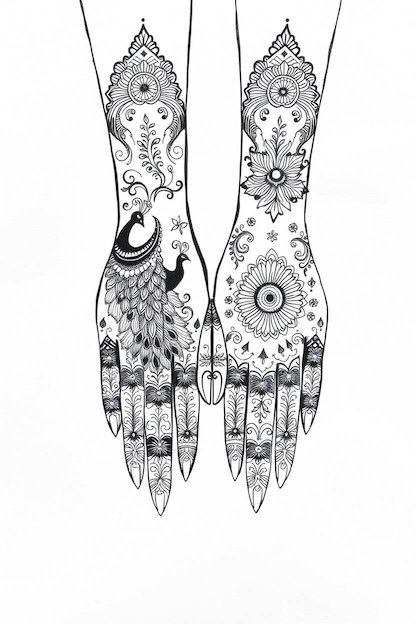
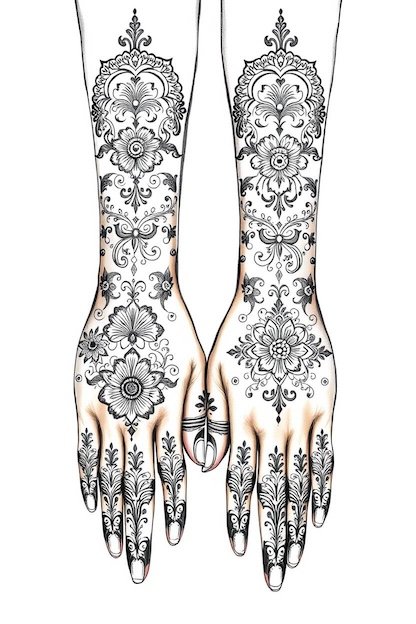
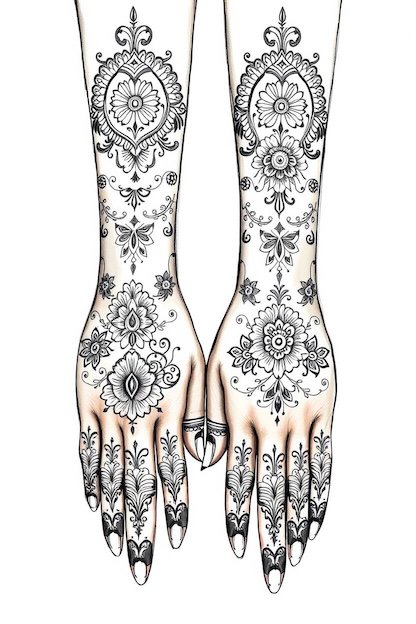
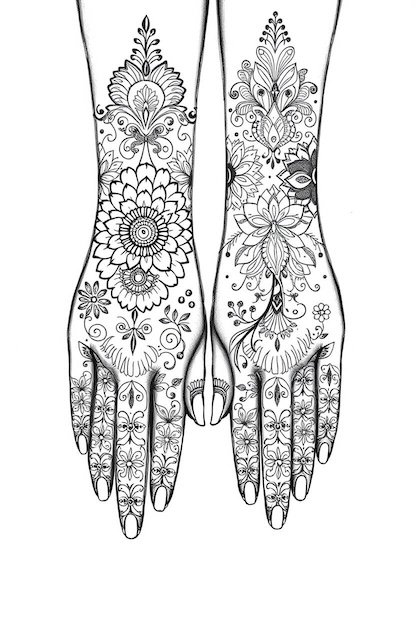
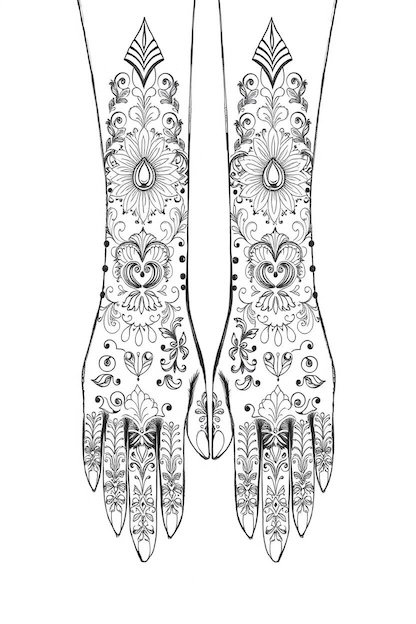
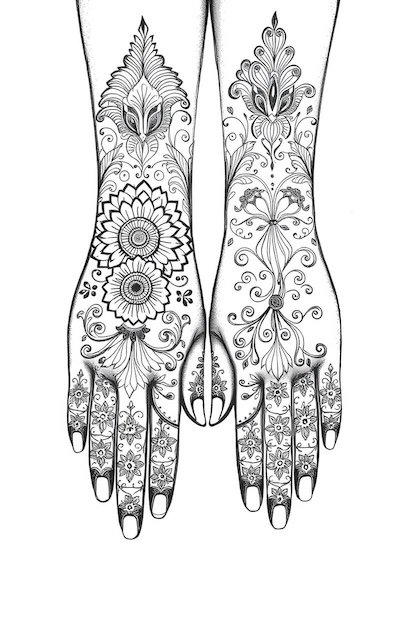
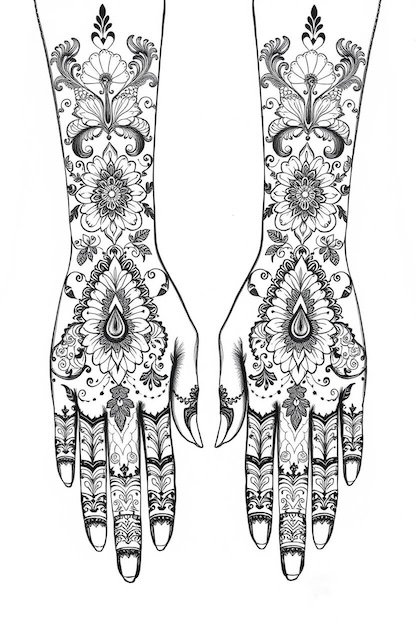
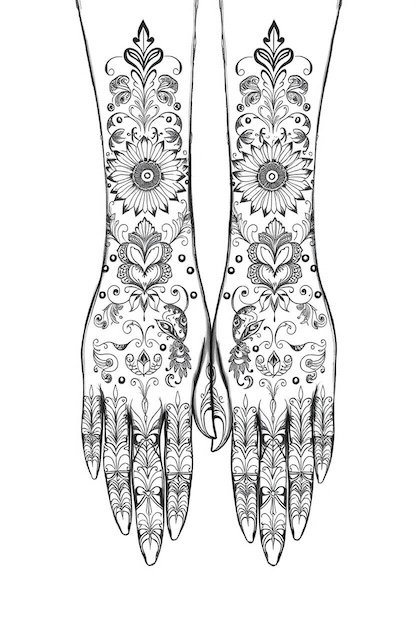
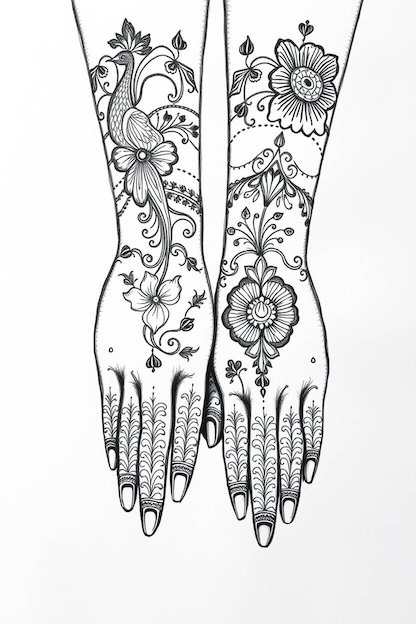
Front Hand Bridal Mehndi Design

The “front hand” refers to the palm and fingers, which are in the spotlight when the bride greets guests or joins hands with the groom for wedding rituals. While many brides go for a full coverage style here, there’s also room for more open, airy designs. For instance, if you’re someone who loves seeing negative space in Mehndi, you can incorporate a mandala at the center of the palm, flanked by minimal floral or leaf patterns that extend toward the fingers.
Popular front-hand designs often include:
- Mandalas: Perfectly symmetrical circles that represent harmony and eternity.
- Checkerboard Patterns: Modern, geometric patterns that add variety and texture to the design.
- Storytelling Scenes: Some brides even request micro-designs that show a quick version of their love story, like their first meeting or a shared passion (e.g., dance or travel).
The front hand is also where a bride might tuck in meaningful symbols or words—maybe a date or a short phrase like “forever yours” in stylized Hindi or Urdu script. Because the palm is such an intimate canvas, it’s the ideal place for these small personal touches.
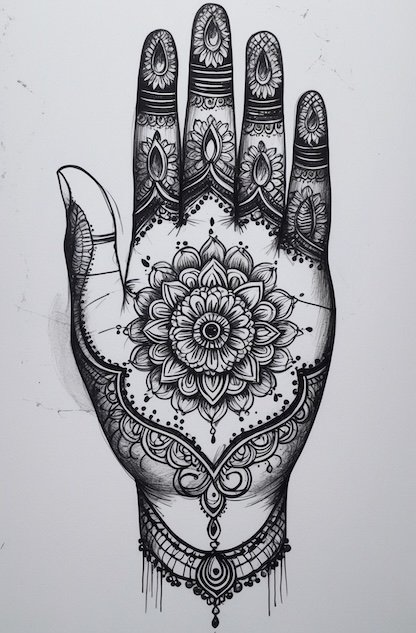
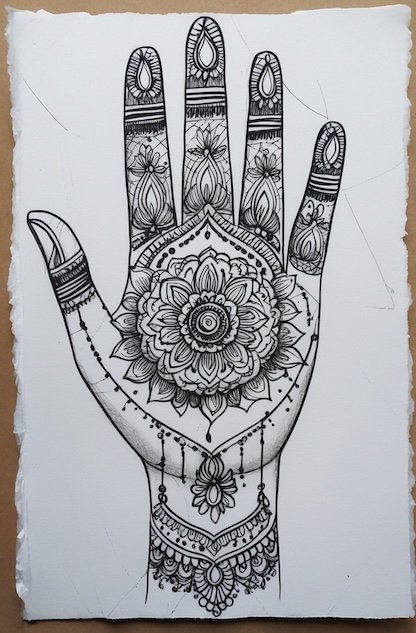

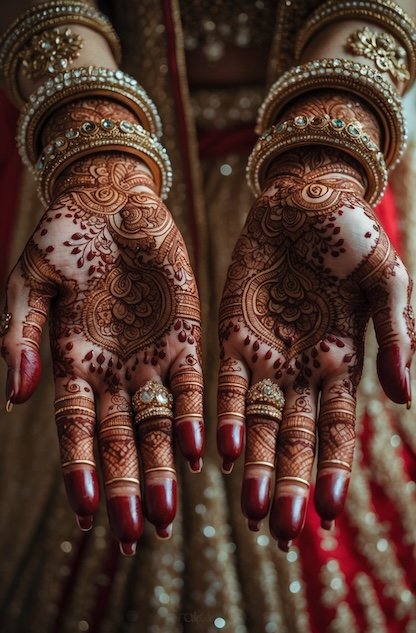
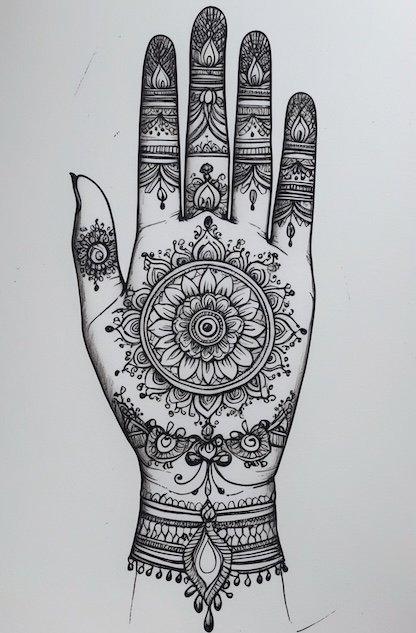
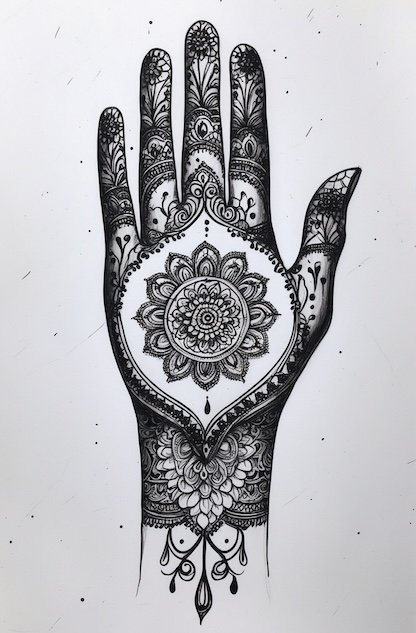
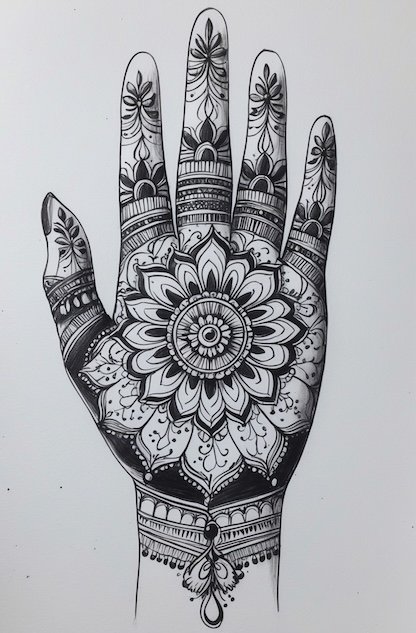
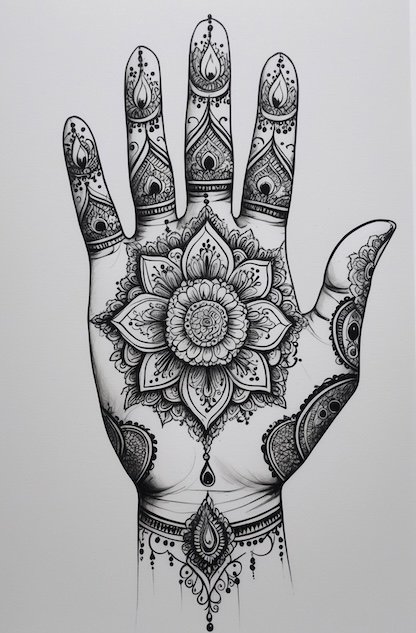
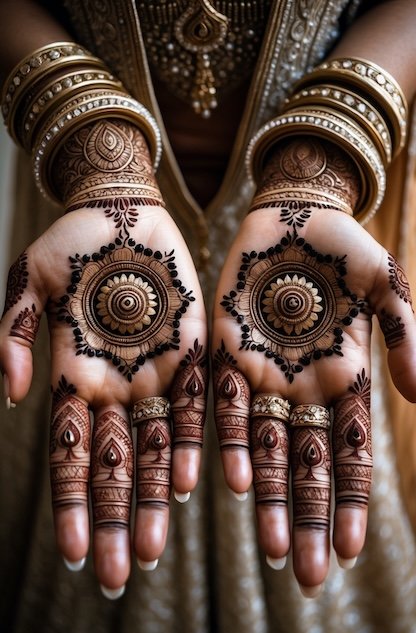
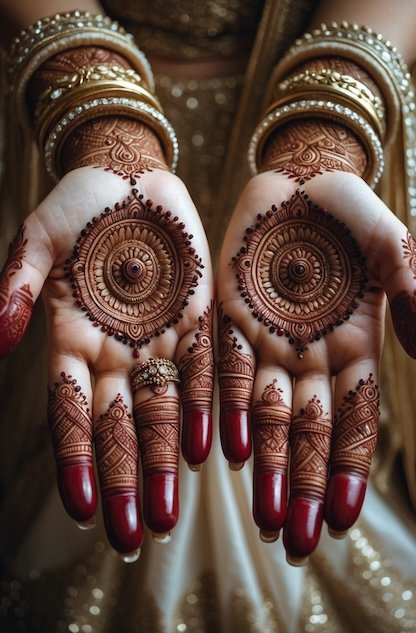
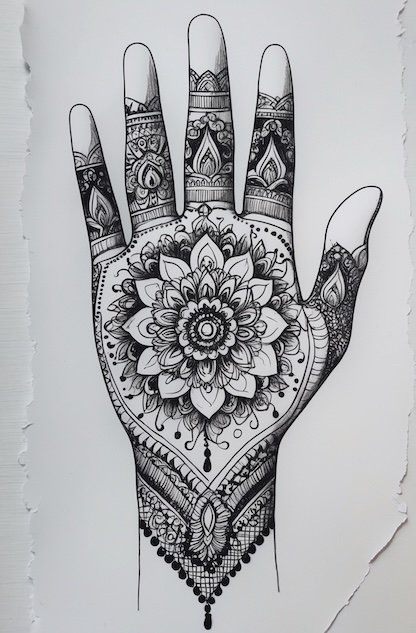
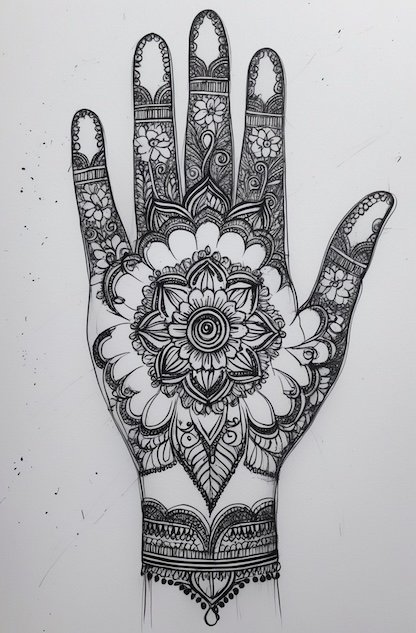
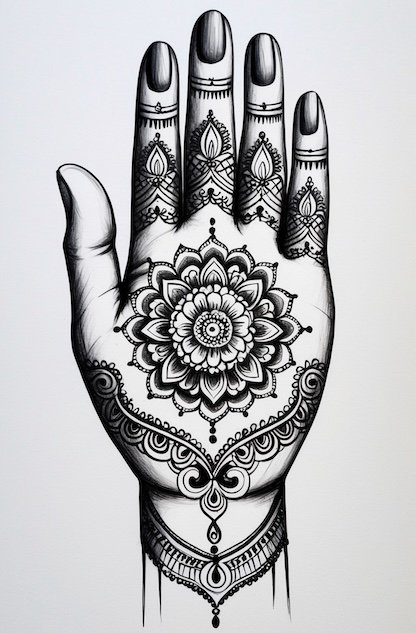

Bridal Foot Mehndi Design
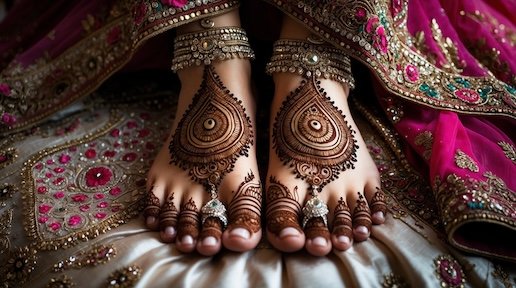
Bridal Foot Mehndi is just as crucial as hand Mehndi for a bride, especially when you consider the variety of footwear (or sometimes bare feet with payals) she might wear throughout her wedding events. Bridal Mehndi for Feet often mimics the lavishness of hand designs but adapts to the unique shape and movement of the feet. Common motifs include anklet-like bands around the ankles, toe-ring-inspired patterns around the toes, and large floral or geometric designs that cover the top of the foot and extend toward the calf.
Some foot designs appear to resemble jewelry more than Mehndi, with elaborately curved lines that wrap around the ankles and delicate chain-like patterns that connect individual floral dots around the toe area. This style ensures that even if the bride wears high heels or flats, her feet remain a visual highlight.

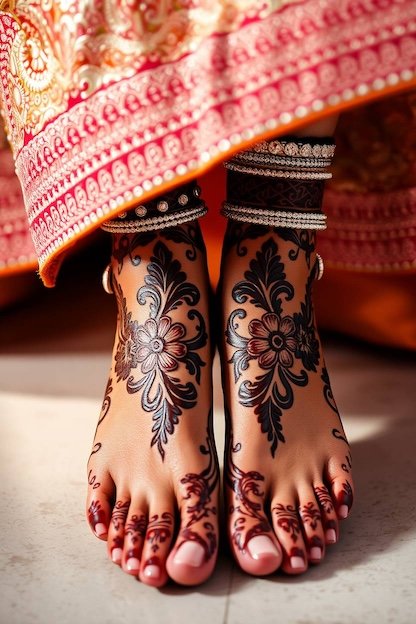
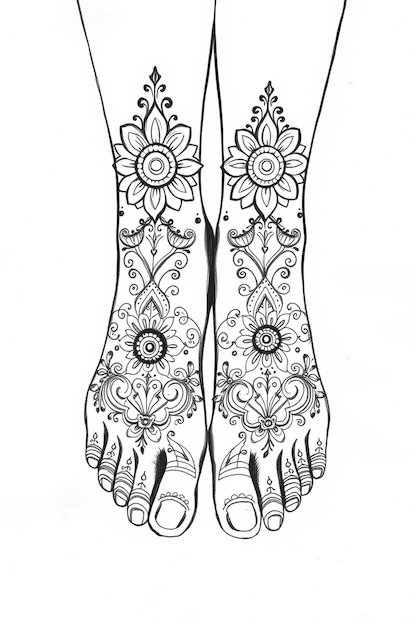

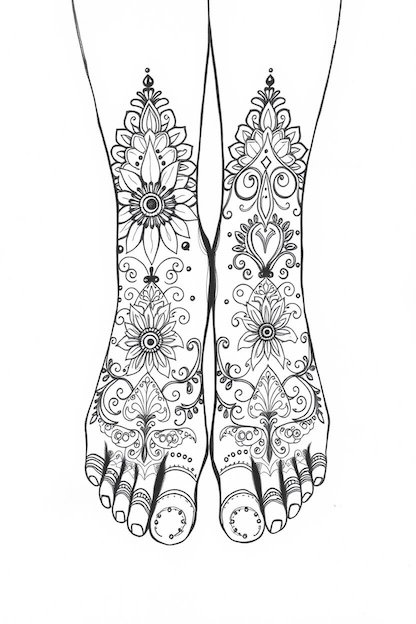
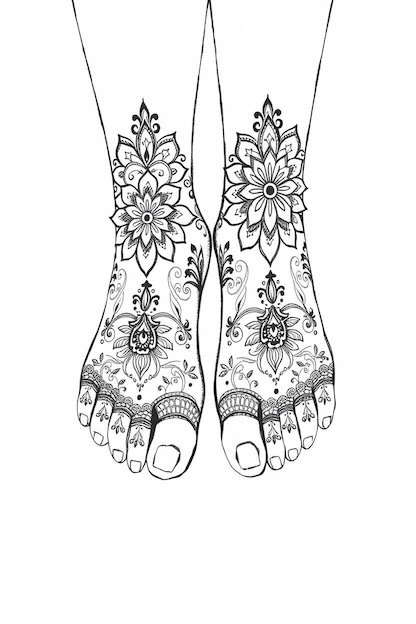
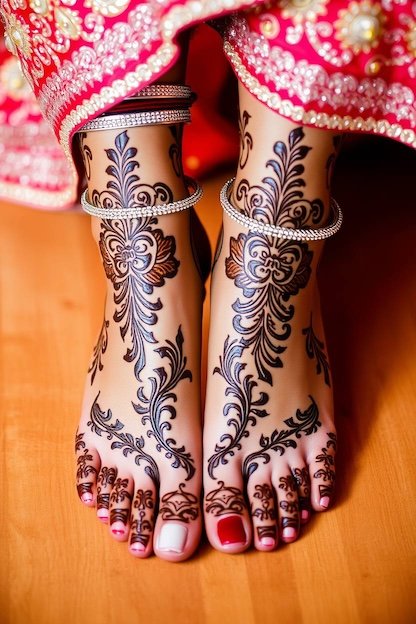
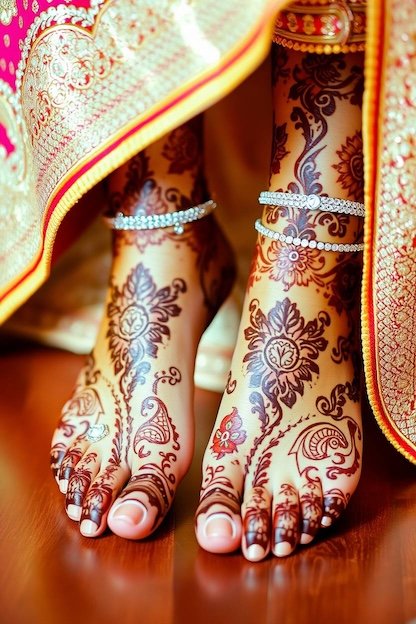
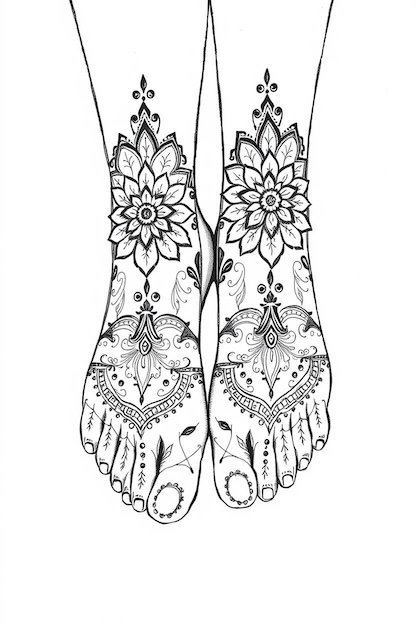
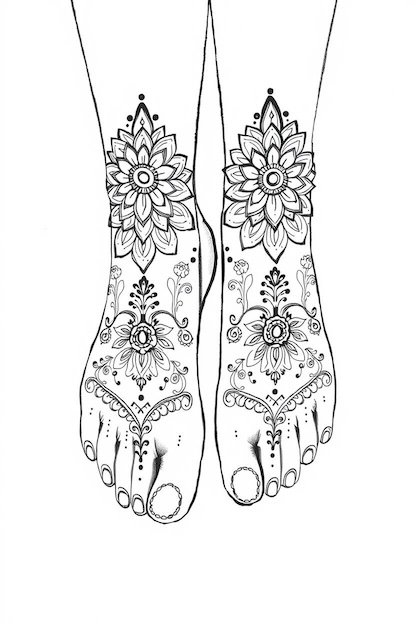
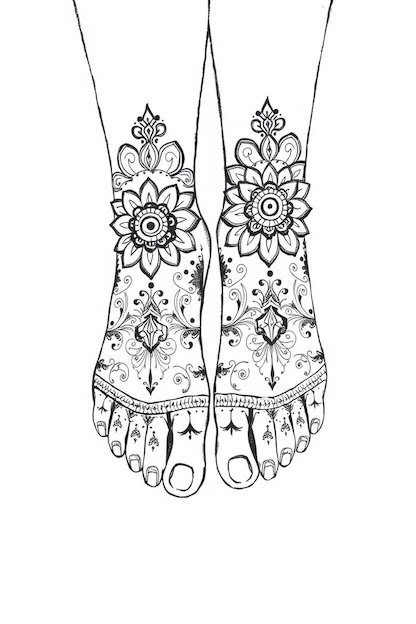
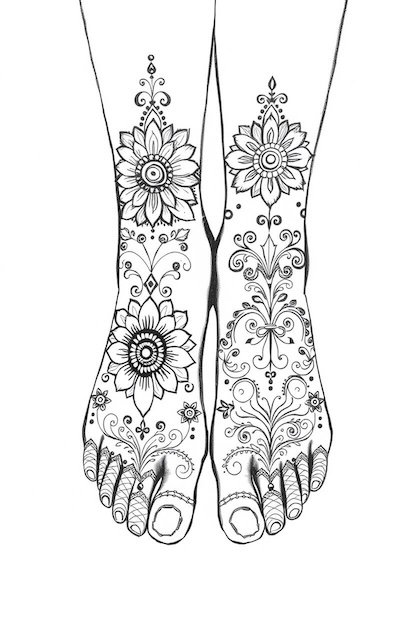
Dulhan Mehndi (Traditional Bridal Mehndi)
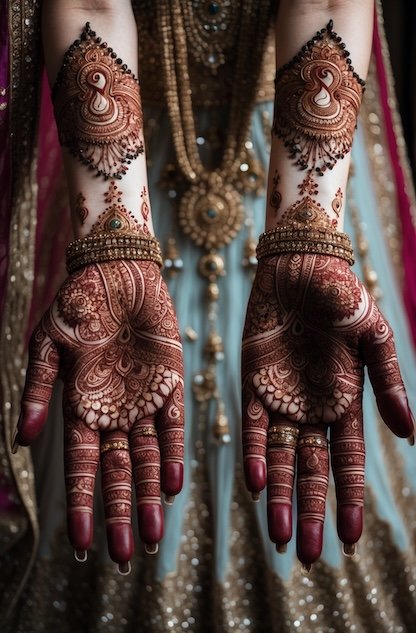
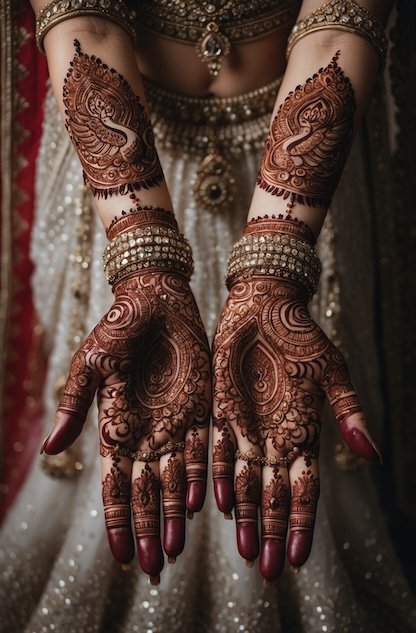
Dulhan Mehndi is the classic, heavily detailed form of bridal henna. It typically involves dense, elaborate patterns covering every inch of the bride’s hands, wrists, and feet. You might see regal elements, like miniature bride and groom figures, woven into peacock tails or nestled among floral vines. This style is often considered the “gold standard” for Indian brides who want the most extensive, time-honored look possible.
What sets Dulhan Mehndi apart is its commitment to storytelling. Artists might incorporate:
- Miniature Baraat Scenes: Depicting the groom arriving on a horse, or the wedding party dancing.
- Religious Symbols: Such as Om or Allah inscriptions, depending on the bride’s faith, blended seamlessly into the design.
- Hidden Names & Dates: A playful puzzle for the groom and families to discover.
The process of applying Dulhan Mehndi can be lengthy. Sometimes taking four to six hours. But the results are stunningly detailed and carry a timeless charm that you’ll see in countless wedding albums. If you’re a bride who wants every aspect of her wedding day to feel deeply traditional and lavish, Dulhan Mehndi is likely your best bet.

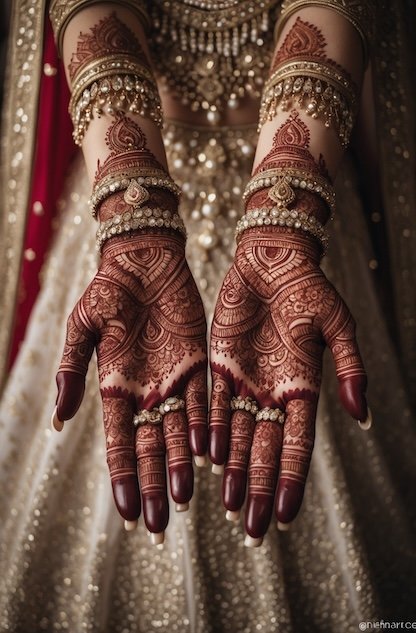
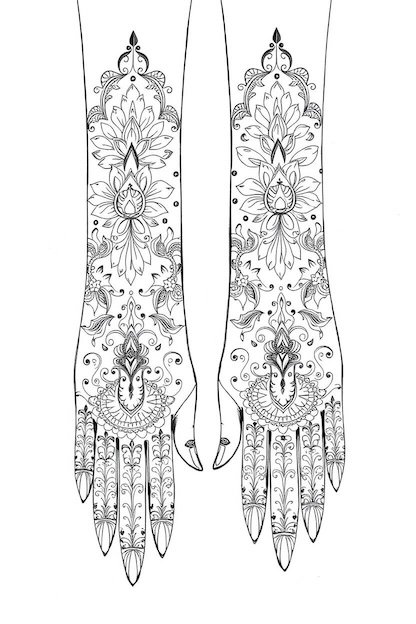
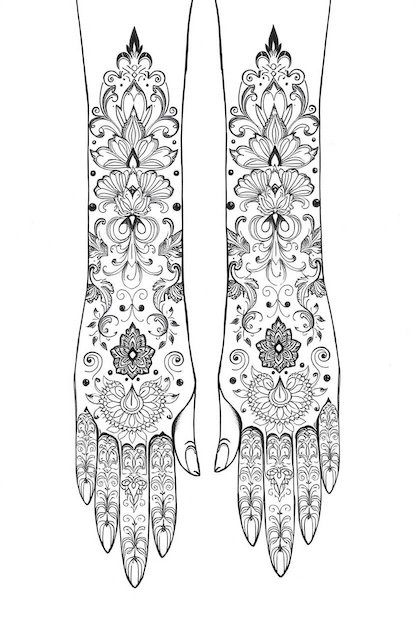
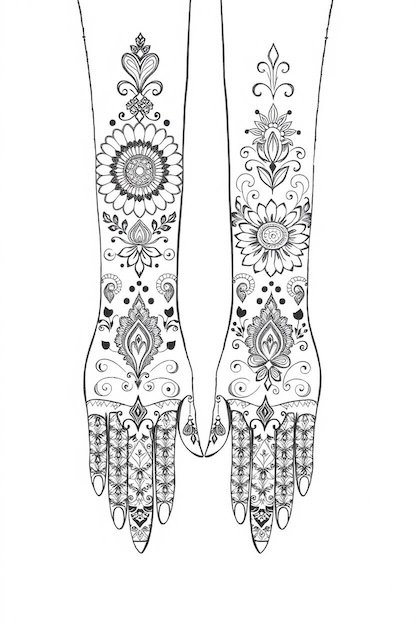
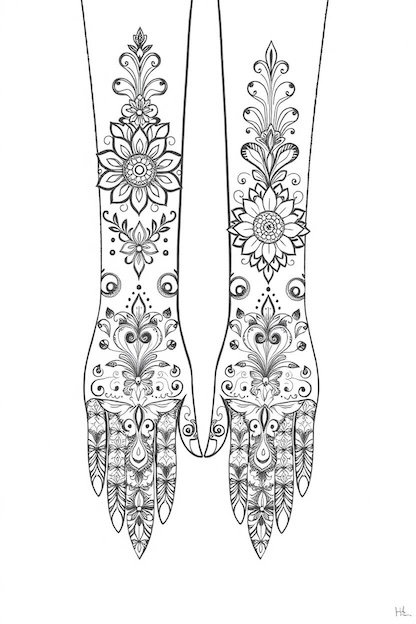
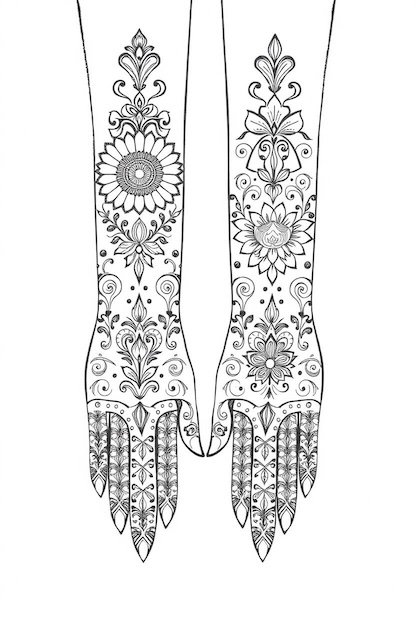
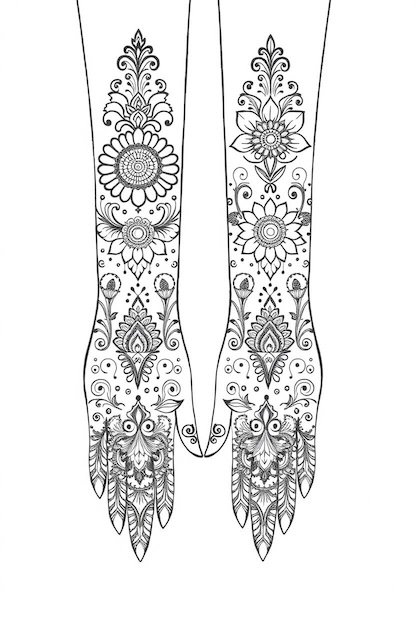
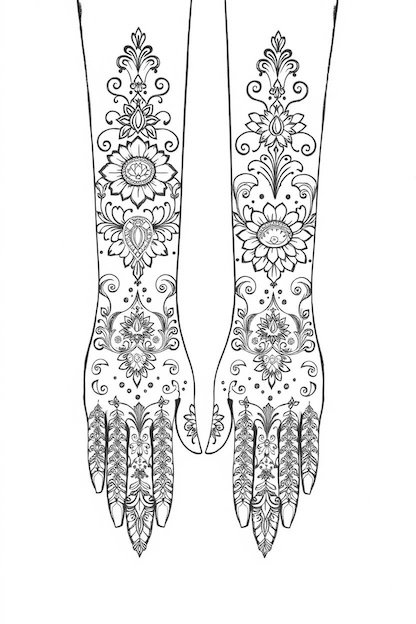
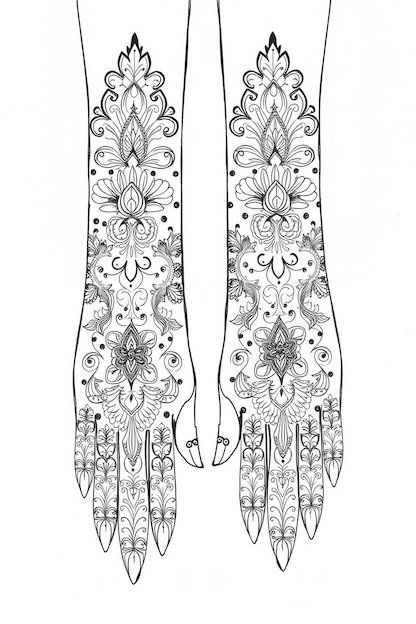
Minimalist Bridal Mehndi for Modern Brides
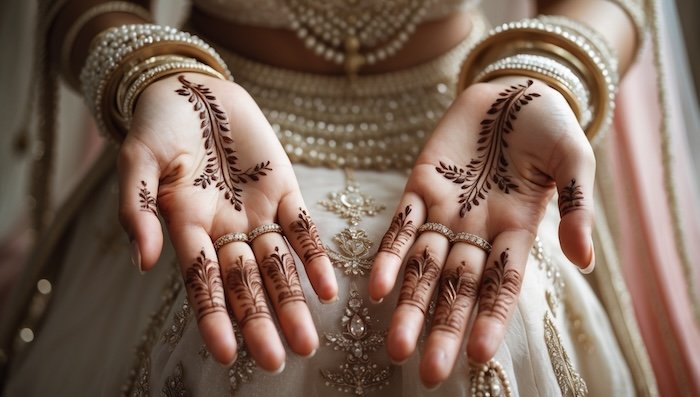
Not every bride dreams of heavily saturated henna designs. Many modern brides, especially those juggling contemporary job roles and personal styles, prefer something simpler yet elegant. Minimalist Bridal Mehndi is perfect for those who find beauty in subtlety. Instead of covering the entire hand, these designs often focus on strategic placement like a gracefully curved motif along the side of the hand, a delicate ring-like design around each finger, or a single statement mandala on the palm.
Minimalist Mehndi can still scream “bridal” when combined with the right wedding outfit and accessories. Imagine wearing a pastel lehenga with rose-gold jewelry, complemented by a simple floral design that accentuates your hands without overpowering them. This style is also practical: it takes less time to apply, it’s easier to maintain, and it still looks stunning in photographs.
Here are a few ideas to spark your creativity:
- Single Mandala with Finger Accents: Center one large mandala on your palm and add rings of minimal designs on each finger.
- Floral Wrist Cuffs: Focus on a cuff-like pattern on the wrist, leaving the palm mostly bare for a contemporary look.
- Geometric Bands: Clean lines and geometric shapes that form an elegant band across the back of the hand, perfect for brides who love modern art.
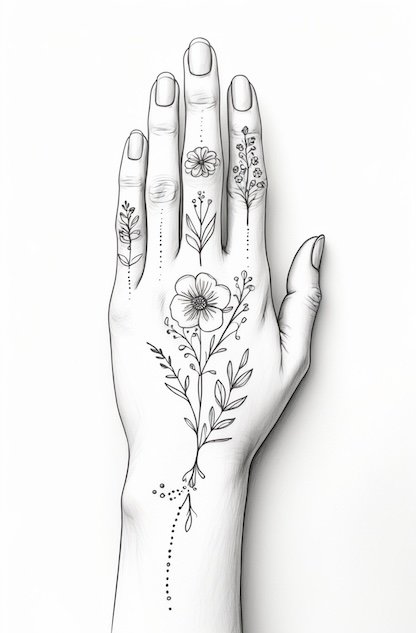
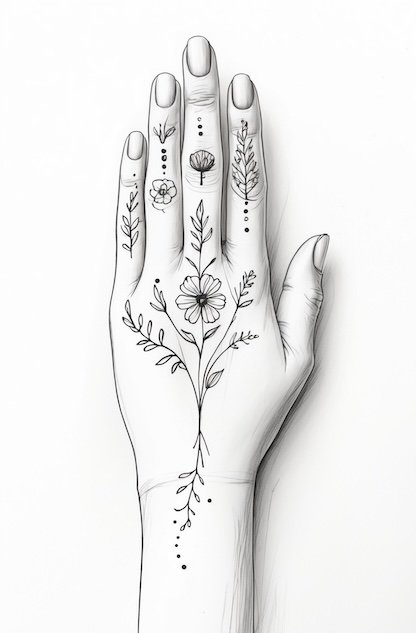

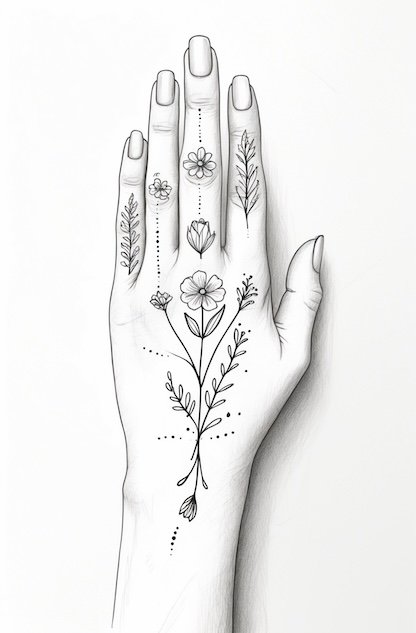
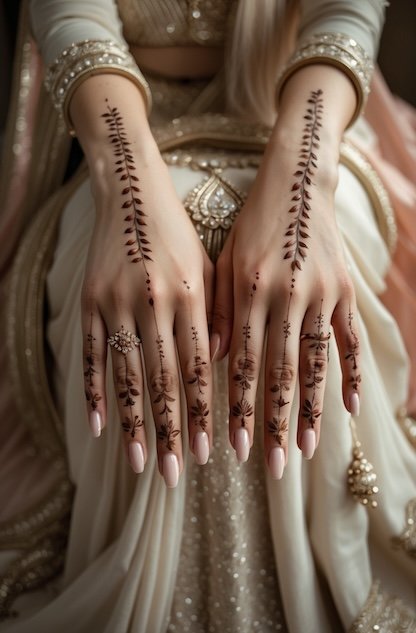
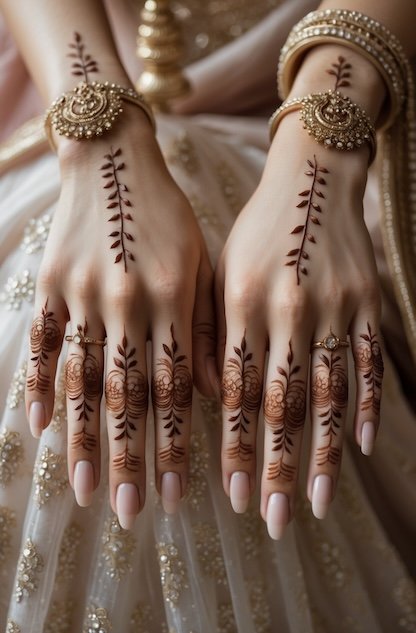
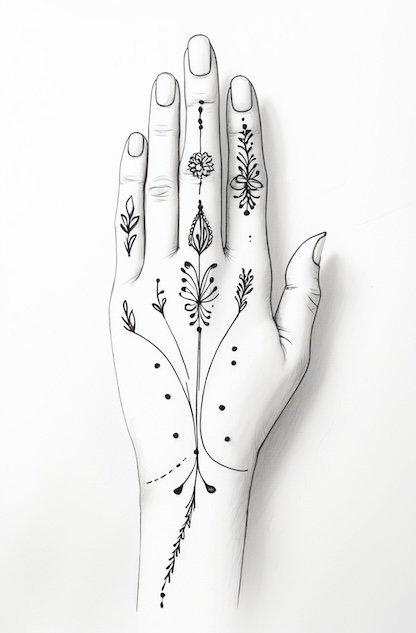
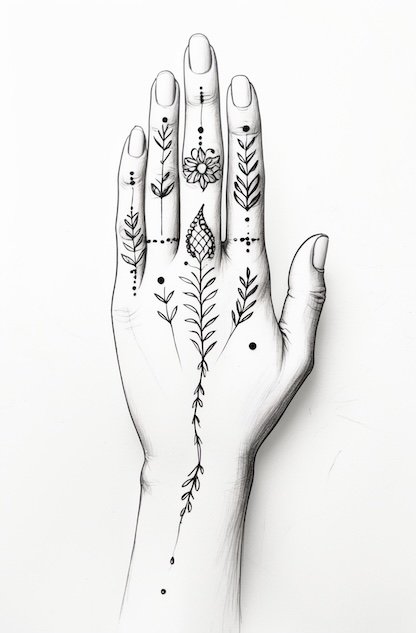
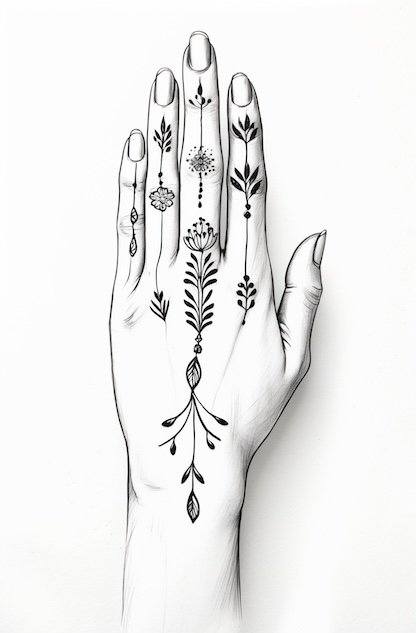
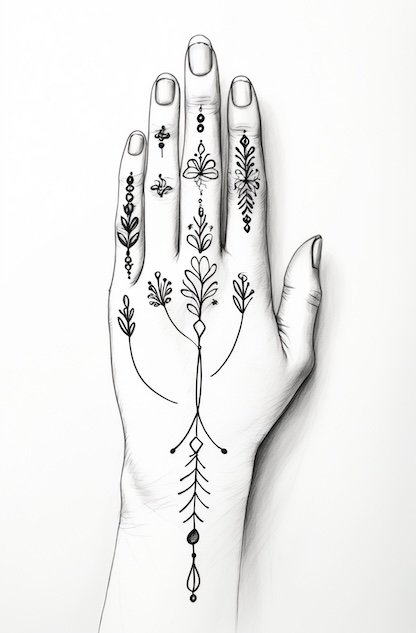
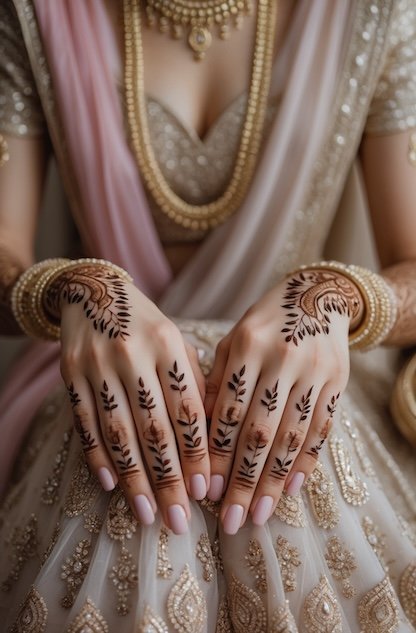
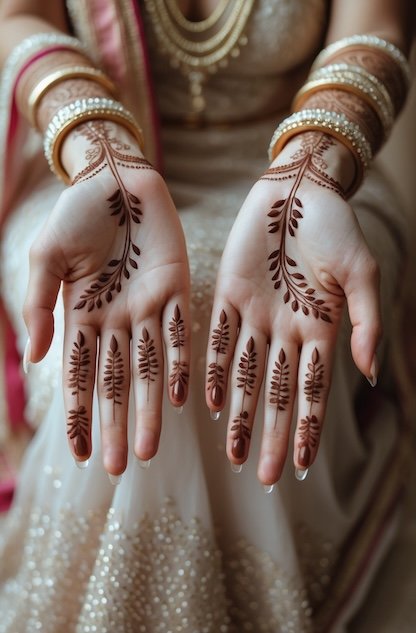
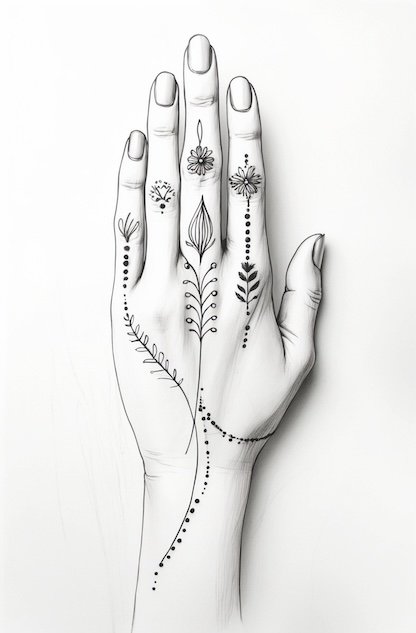
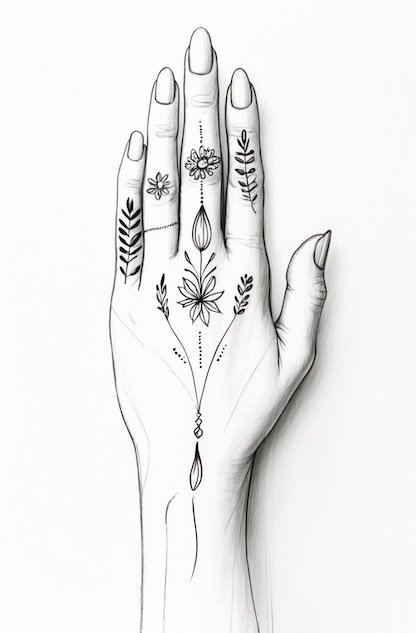
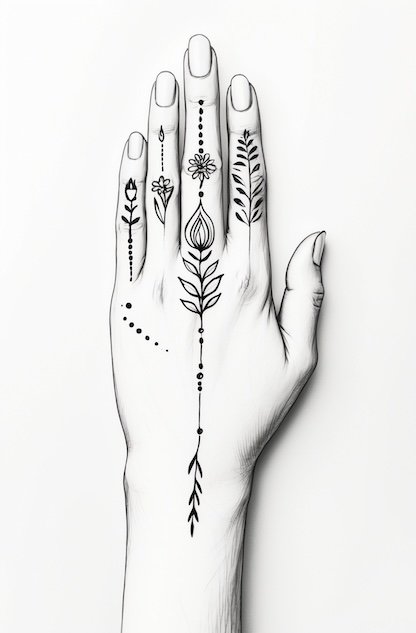
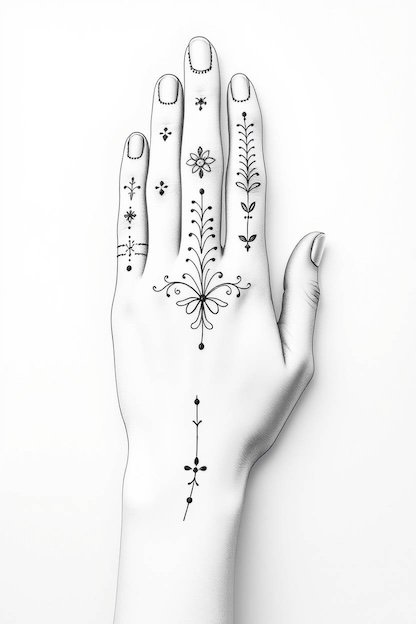
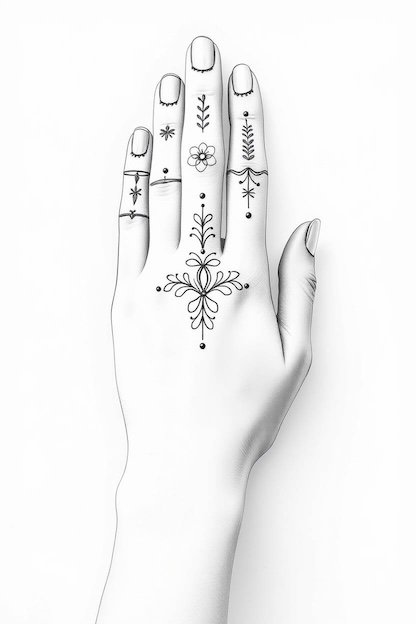
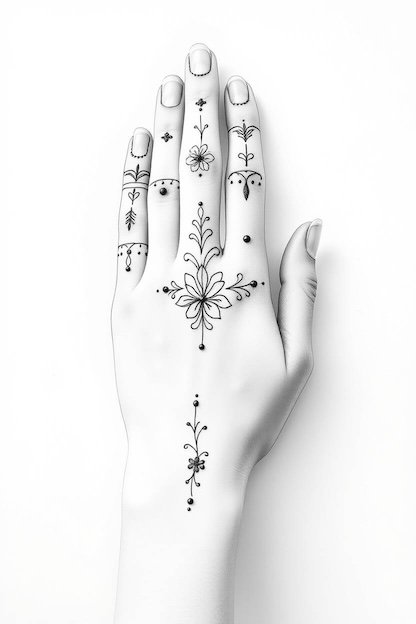
Modern Twists on Bridal Mehndi: White, Glitter, and Storytelling
While the above designs are rooted in tradition, many brides are experimenting with modern materials and techniques to make their Bridal Mehndi stand out on Instagram or Pinterest. Examples include:
- White Mehndi: Using white cosmetic henna or paint to create a lace-like effect that contrasts beautifully with Indian skin tones. This style, however, is often more for show than for tradition, as it doesn’t stain the skin permanently like organic henna does.
- Glitter Mehndi: Perfect for receptions or Sangeet nights. Artists apply cosmetic-grade glitter over or alongside the henna design to give it extra shine. While it’s temporary, it photographs brilliantly under party lights.
- Storytelling Mehndi: Designs that visually narrate the couple’s journey. This could be the depiction of the place they first met, their shared hobbies, or even a map route illustrating their long-distance love. It’s a fun way to give guests a peek into the couple’s history.
The key is to ensure that even these modern twists remain fundamentally “bridal.” After all, the bride should feel her Mehndi amplifies the emotional significance of the wedding, not just the aesthetic.
How to Choose the Perfect Bridal Mehndi Style
Deciding on your Bridal Mehndi style can be surprisingly tricky. With so many gorgeous designs floating around on social media, it’s easy to get overwhelmed. But remember: the best bridal Mehndi is the one that resonates with you, your tastes and your personality.
Match Your Mehndi with Bridal Attire & Jewelry
One of the first considerations should be your wedding outfit. Is your lehenga a modern pastel with delicate embroidery, or is it a heavily embellished red velvet piece befitting a royal princess? Your Mehndi can complement these style cues by incorporating similar motifs (like lotuses if your dupatta has lotus motifs) or by keeping the design minimal if your outfit is already very ornate.
The same goes for jewelry. If you’re wearing elaborate gold and diamond bangles, you might want a design that integrates well around your wrists without clashing. On the other hand, if your accessories are minimalistic consider a more dominant Mehndi pattern that fills that visual space.
Wedding Themes & Personal Aesthetics
Some Indian weddings follow a theme. If you have a specific décor theme in mind, you can extend that to your Mehndi design.
Your personal aesthetic also plays a massive role. Are you the kind of person who loves statement pieces and bold designs? Go for Full Hand Bridal Mehndi or Dulhan Mehndi. Prefer subtlety and elegance? Minimalist or modern-fusion Mehndi styles might speak to your soul.
Regional Differences in Bridal Mehndi Styles Across India
Even though your personal preference is paramount, it can help to explore traditional styles from your or your partner’s region. For instance:
- North Indian Mehndi: Characterized by dense, intricate designs covering large areas of the hand and feet.
- Rajasthani Mehndi: Known for motifs that reflect regal heritage like peacocks, royal palaces, and elaborate floral patterns.
- Gujarati Mehndi: Typically includes a lot of mesh or net-like patterns combined with bold motifs.
- Marwari Mehndi: Similar to Rajasthani but often features even more dense detailing.
- South Indian Mehndi: Often simpler, with bolder lines and more open spaces, but can also mix in Arabic influences.
Considering these regional differences can be especially meaningful if your family has specific cultural roots. Incorporating motifs from both the bride and groom’s backgrounds can be a sweet gesture of unity, making the design a symbolic representation of two families coming together. Mehndi is a cherished part of Indian weddings, symbolizing love and blessings. Learn more about its cultural significance at The Knot.
Practical Considerations
While Bridal Mehndi is undeniably beautiful, it can also be a commitment. Think about how much time you’re willing to spend getting your Mehndi applied and how patient you’ll be sitting still for several hours. If the idea of spending half a day with wet henna on your arms and legs makes you anxious, perhaps a slightly less dense design might be a better fit.
In the end, choosing the perfect Bridal Mehndi design is a balance between aesthetics, tradition, practicality, and personal identity. Take the time to visualize yourself on your wedding day: the outfit, the jewelry, the overall vibe. Let that mental picture guide you toward a style that feels like you and that you’ll love showing off in all those wedding photos.
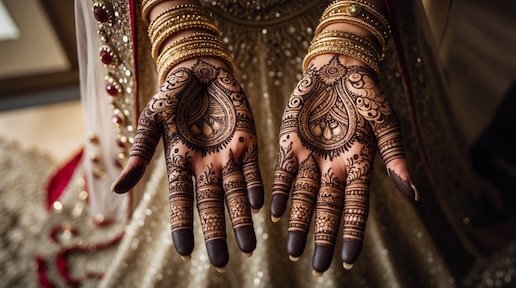
Bridal Mehndi Application Strategies
Think of Bridal Mehndi application as an event in itself. Often scheduled one or two days before the wedding, the Mehndi session is crucial to plan properly so you get the richest stain possible without interfering with your wedding preparations.
Timing Is Everything
Most brides opt to have their Mehndi done at least 48 hours before the main wedding event. This time ensures that the henna has enough time to darken fully. Daytime application is often preferred for natural light, which helps the Mehndi artist see details clearly, but evening sessions are also common, especially if you’re hosting a Mehndi party.
A Comfortable Setup
Bridal Mehndi sessions can last anywhere from 2 to 6 hours, depending on the complexity of the design. Make sure you have a comfortable seat, and consider placing cushions or pillows under your arms and legs to avoid stiffness.
Avoiding Smudges
After the application, the wet henna paste needs time to dry and set. Avoid any form of contact with water or vigorous activity during this period. Many brides schedule their spa or salon treatments before getting their Mehndi applied, because water, lotions, and oils can interfere with how well the henna stains.
Ensuring a Long-Lasting Result
Keep your hands and feet warm (some people even carefully use a blow dryer on low heat), and avoid touching anything that could flake off the paste prematurely.
Delegate Tasks
Make sure a family member or bridesmaid is on standby to help you with tasks like answering phone calls, fetching refreshments, or basically anything that involves using your hands.
Since Bridal Mehndi is such a personal, immersive part of your wedding prep, these strategies ensure you get the best possible results without the stress of last minute slip-ups.
Latest Bridal Mehndi Trends & Expert Opinions
As cultural and artistic expressions evolve, so does Bridal Mehndi Design. It’s not just about traditional paisleys and peacocks anymore; the contemporary bride often wants something fresh and Instagram worthy. Let’s take a quick look into what’s hot right now.
New Bridal Mehndi Trends
– Indo-Western Fusion: Imagine a design that places a detailed mandala on one hand but follows a minimalist, almost Western tattoo-like motif on the other. This combination is growing popular among brides who have cross cultural influences.
– Metallic & Glitter Accents: Apart from using cosmetic glitter, some artists incorporate foil or metallic tattoos to highlight specific parts of the henna pattern. This looks best during nighttime wedding functions.
– Floral Portraits: A spin on the “portrait Mehndi” concept, but with floral overlays. The bride’s face or the couple’s silhouettes might be outlined within a bouquet design.
Expert Mehndi Artist Insights
We spoke to a few professional Mehndi artists who specialize in wedding Mehndi to gather their top tips:
- Ritika, Mumbai-based Mehndi Artist: “I always advise brides to do a quick patch test of their chosen henna brand well before the wedding. Some chemical cones can cause allergic reactions or yield an orange tint that never darkens properly. Go for natural, organic henna whenever you can.”
- Aamir, Renowned Delhi Mehndi Artist: “If you want a super dark stain, keep your body warm. I’ve seen brides sip on ginger tea or even wear light sweaters to help the henna set. It sounds funny, but it works wonders for color development.”
- Meenal, Rajasthan-based Mehndi Expert: “For brides who love tradition, I recommend story-based Mehndi. Include elements from your favorite festivals like diyas for Diwali or a tiny crescent moon for Eid. It instantly personalizes the design and ties it to the couple’s life events.”
Temporary vs. Permanent Accents
While natural henna fades after a week or two, some brides experiment with semi-permanent or even permanent tattoos in addition to their Mehndi. If you’re considering this, note that the aesthetic is completely different, and permanent inks can’t replicate the warmth and tradition of henna designs. For a once in a lifetime event like your wedding, it’s usually better to stick with the charm of natural Mehndi.
Overall, the latest trends show that Indian brides are becoming more fearless and experimental, weaving new elements into age-old customs. Whether you stick to a classic approach or indulge in the newest fads, what’s most important is that your Mehndi reflects your personality and sets the tone for your unique love story.
How to Choose the Perfect Bridal Mehndi Design
Choosing the right bridal mehndi design is essential to complement your wedding look and express your personal style. Follow these steps to find the perfect design for your big day.
Step 1: Consider Your Wedding Theme
Match your mehndi design to your wedding’s aesthetic. For traditional Indian weddings, opt for intricate Rajasthani or Punjabi bridal mehndi designs with paisleys and mandalas. For modern or minimalist weddings, choose Arabic or contemporary designs with simpler patterns.
Step 2: Decide on Coverage
Determine how much of your hands and feet you want covered. Full-hand and foot bridal mehndi designs are ideal for a classic look, while finger-to-wrist designs suit a subtler style. Discuss coverage with your mehndi artist to ensure it complements your bridal attire.
Step 3: Personalize Your Design
Incorporate personal elements, such as your initials, wedding motifs, or a bride-and-groom portrait, to make your bridal mehndi design unique. Share your story with your artist to create a design that reflects your journey.
Step 4: Choose a Reputable Artist
Select a professional mehndi artist experienced in bridal mehndi designs. Check their portfolio for quality and consistency, and ensure they use natural, high-quality henna for a safe, long-lasting stain.
Step 5: Schedule a Trial
Book a trial session 1–2 months before your wedding to test the design and henna quality. This ensures you’re happy with the style and gives the artist time to make adjustments for your big day.
Frequently Asked Questions
Question: What are the most popular bridal mehndi designs for weddings?
Answer: Popular bridal mehndi designs include intricate full-hand patterns with paisleys, floral motifs, and mandalas, as well as detailed designs featuring bride-and-groom portraits or personalized elements. Traditional Indian bridal mehndi designs often cover the hands and feet with symmetrical patterns, while Arabic bridal mehndi designs focus on bold, flowing patterns with open spaces. These designs are chosen for their elegance and cultural significance, making them perfect for weddings.
Question: How long does it take to apply bridal mehndi designs?
Answer: Applying bridal mehndi designs typically takes 3–6 hours, depending on the complexity and coverage. Full-hand and foot bridal mehndi designs with intricate details, such as lace-like patterns or storytelling elements, may take longer. Professional mehndi artists recommend scheduling ample time to ensure precision and allow the henna to dry properly for a vibrant stain.
Question: How can I make my bridal mehndi designs last longer?
Answer: To make bridal mehndi designs last longer, apply a sugar-lemon mixture after the henna dries to seal the design. Avoid water contact for 24 hours and moisturize daily with coconut or almond oil. Keeping the skin hydrated and avoiding excessive scrubbing can help bridal mehndi designs stay vibrant for 1–3 weeks, perfect for wedding festivities. To keep your bridal mehndi designs vibrant for your big day, follow these expert tips on henna care from Brides.com.
Question: Are bridal mehndi designs suitable for all wedding styles?
Answer: Yes, bridal mehndi designs are versatile and can be tailored to suit various wedding styles. For traditional Indian weddings, elaborate Rajasthani or Punjabi bridal mehndi designs with dense patterns are ideal. For modern or minimalist weddings, simpler Arabic or contemporary bridal mehndi designs with geometric shapes or floral accents work beautifully, complementing any bridal look.
Question: What should I consider when choosing bridal mehndi designs?
Answer: When choosing bridal mehndi designs, consider the wedding theme, your outfit, and personal style. Opt for designs that reflect cultural significance, like traditional Indian motifs for a classic look or modern minimalist patterns for a chic vibe. Ensure the artist uses high-quality, natural henna for a safe, long-lasting stain, and discuss customization options to make your bridal mehndi designs unique.
Conclusion
Whether you’re drawn to the grandeur of Dulhan Mehndi, the elegance of minimalistic designs, or the excitement of new trends like white henna and glitter embellishments, your Bridal Mehndi should ultimately make you feel confident and beautiful. After all, it’s your big day, your hands, your story, and your statement to the world about love, unity, and celebration.
We hope this guide has given you a thorough understanding of how Bridal Mehndi Design can be customized to your cultural background, personal style, and practical needs. For more Mehndi inspiration, wedding tips, and style guides, feel free to explore the other pillar articles on this website. Here’s wishing you a magical wedding experience filled with laughter, love, and beautifully stained hands that tell the story of your special day.

